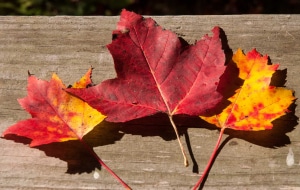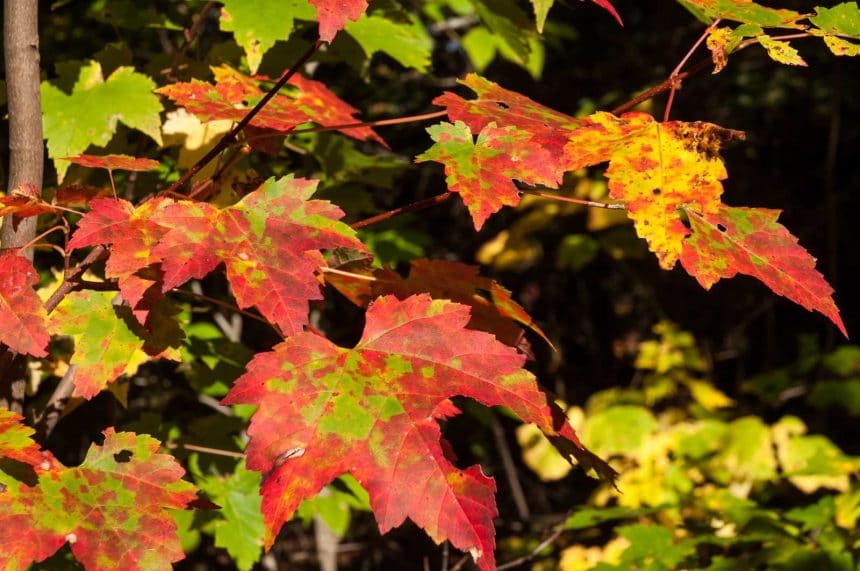Now that we know why the leaves change colour in autumn (if you missed it, read Peter’s Fall Colour article), let’s look into a curiousity about red maple (Acer rubrum).

Red maple trees are “polygamo-dioecious.” They are chiefly dioecious, which means that there are both male trees and female trees, but individual trees can be polygamous (having both hermaphroditic and unisexual flowers) so both male and female flowers can reside on the same tree, but the most common condition is for trees to have only all male or all female flowers. A small percentage of trees can completely switch genders, showing all male flowers some years, all female in other years and a mixture of genders in other years. A theory claims that leaves on male trees turn a certain colour as the chlorophyll fades, and female trees will go a different colour. (It’s hard to think of a word whose definition incorporates more ‘ors’ or ‘buts’ than “polygamodioecious”, it’s really a mouthful, but think of how impressed your friends will be when you quote it!)

When we consider this instability in flowering, the wide spectrum of fall colours within this species doesn’t seem so odd anymore. Here at Haliburton Forest, red maples add to the spectacular palette of fall colours and their variability seems to set the tree ablaze. Just in case you needed one more reason to be in awe of all the fantastic colours at this time of year…
Juliette Arsenault, with photos and ‘layman translation’ by Hermann Thoene and Sandra Carroll


